
Todd Mason mentioned Thrillers: 100 Must Reads (2010) on his fine blog here. Somehow, David Morrell and Hank Wagner’s book had slipped by my radar. So, I do what I usually do when encountering notice of an interesting book: I tracked down a copy. And read it. The key to success for books like Thrillers: 100 Must Reads rests not on the choices of the 100 “thrillers” but on the supporting essays which explain why each particular title was selected. I’ve read many of these books–68 to be exact–and I now have a list of a half dozen addition books from this list that I’ll be reading in the near future. If you’re a fan of thrillers, you’ll find plenty here to entertain you. How many of these books have you read? GRADE: A
TABLE OF CONTENTS:
Welcome to the world of thrillers / by David Hewson
One hundred must-read thrillers / by David Morrell, Hank Wagner
Theseus and the Minotaur (1500 B.C.) / Lee Child
Homer’s The Iliad and the Odyssey (7th century B.C.) / William Bernhardt
Beowulf (between 700 and 1000 A.D.) / Andrew Klavan
William Shakespeare’s Macbeth (1605-1606) / A.J. Hartley
Daniel Defoe’s Robinson Crusoe (1719-1722) / David Liss
Mary Shelley’s Frankenstein, or, The modern Prometheus (1818) / Gary Braver
James Fenimore Cooper’s The last of the Mohicans (1826) / Rick Wilber
Edgar Allan Poe’s The narrative of Arthur Gordon Pym of Nantucket (1838) / Katherine Neville
Alexandre Dumas’ The count of Monte Cristo (1845) / Francine Mathews
Wilkie Collins’s The woman in white (1860) / Douglas Preston
H. Rider Haggard’s King Solomons mines (1885) / Norman L. Rubenstein
Robert Louis Stevenson’s The strange case of Dr. Jekyll & Mr. Hyde (1886) / Sarah Langan
Anthony Hope’s The prisoner of Zenda (1894) / Michael Palmer
Bram Stoker’s Dracula (1897) / Carole Nelson Douglas
H.G. Wells’s The war of the worlds (1898) / Steven M. Wilson
Rudyard Kipling’s Kim (1901) / Tom Grace
Sir Arthur Conan Doyle’s The hound of the Baskervilles (1901) / Laura Benedict
Joseph Conrad’s Heart of darkness (1902) / H. Terrell Griffin
Erskine Childers’s The riddle of the sands (1903) / Christine Kling
Jack London’s The sea wolf (1904) / Jim Fusilli
Baroness Emma Orczy’s The scarlet pimpernel (1905) / Lisa Black
Edgar Rice Burroughs’s Tarzan of the apes (1912) / W. Craig Reed
Marie Belloc Lowndes’s The lodger (1913) / James A. Moore
John Buchan’s The thirty-nine steps (1915) / Janet Berliner
E. Phillips Oppenheim’s The great impersonation (1920) / Justin Scott
Richard Connell’s “The most dangerous game” (1924) / Katherine Ramsland
W. Somerset Maugham’s Ashenden, or, the British agent (1928) / Melodie Johnson Howe
P.G. Wodehouse’s Summer lightning (1929) / R.L. Stine
Edgar Wallace’s King Kong (1933) / Kathleen Sharp
Lester Dent’s Doc Savage : the man of bronze (1933) / Mark T. Sullivan
James M. Cain’s The postman always rings twice (1934) / Joe R. Lansdale
Daphne du Maurier’s Rebecca (1938) / Allison Brennan
Agatha Christie’s And then there were none (1939) / David Morrell
Eric Ambler’s A coffin for Dimitrios (1939) / Ali Karim
Geoffrey Household’s Rogue male (1939) / David Morrell –
Helen Macinnes’s Above suspicion (1941) / Gayle Lynds
Cornell Woolrich’s “Rear Window” (1942) / Thomas F. Monteleone
Vera Caspary’s Laura (1943) / M.J. Rose
Kenneth Fearing’s The big clock (1946) / Lincoln Child
Graham Greene’s The third man (1950) / Rob Palmer
Patricia Highsmith’s Strangers on a train (1950) / David Baldacci
Mickey Spillane’s One lonely night (1951) / Max Allan Collins
Jim Thompson’s The killer inside me (1953) / Scott Nicholson
Ernest K. Gann’s The high and the mighty (1953) / Ward Larsen
Jack Finney’s Invasion of the body snatchers (1955) / James Rollins
Hammond Innes’s The wreck of the Mary Deare (1956) / Matt Lynn
Ian Fleming’s From Russia, with love (1957) / Raymond Benson
Alistair MacLean’s The guns of Navarone (1957) / Larry Gandle
Richard Condon’s The Manchurian candidate (1959) / Robert S. Levinson
Len Deighton’s The IPCRESS file (1962) / Jeffery Deaver
Fletcher Knebel & Charles W. Bailey’s Seven days in May (1962) / James Grady
Lionel Davidson’s The rose of Tibet (1962) / Milton C. Toby
Richard Stark’s (Donald E. Westlake’s) The hunter aka Point blank (1962) Duane Swierczynski
John le Carré’s The spy who came in from the cold (1963) / Denise Hamilton
Wilbur Smith’s When the lion feeds (1964) / W.D. Gagliani
Evelyn Anthony’s The rendezvous (1967) / Sandra Brown
Michael Crichton’s The Andromeda strain (1969) / Josh Conviser
James Dickey’s Deliverance (1970) / Terry Watkins
Frederick Forsyth’s The day of the jackal (1971) / F. Paul Wilson
Brian Garfields’s Death wish (1972) / John Lescroart –
David Morrell’s First blood (1972) / Steve Berry
Trevanian’s The Eiger sanction (1972) / Lee Goldberg
Charles McCarry’s The tears of autumn (1974) / Hank Wagner
Peter Benchley’s Jaws (1974) / P.J. Parrish
William Goldman’s Marathon man (1974) /Hank Wagner
James Grady’s Six days of the condor (1974) / Mark Terry
Jack Higgins’s The eagle has landed (1975) / Zoë Sharp
Joseph Wambaugh’s The choirboys (1975) / James O. Born
Clive Cussler’s Raise the Titanic! (1976) / Grant Blackwood
Ira Levin’s The boys from Brazil (1976) / Daniel Kalla
Robin Cook’s Coma (1977) / CJ Lyons
Ken Follett’s Eye of the needle (1978) / Tess Gerritsen
Ross Thomas’s Chinaman’s chance (1978) / John D. MacDonald’s The green ripper (1079) / J.A. Konrath
Justin Scott’s The shipkiller (1079) / Lawrence Light
Robert Ludlum’s The Bourne identity (1980) / Linda L. Richards
Eric Van Lustbader’s The ninja (1980) / J.D. Rhoades
Thomas Harris’s Red dragon (1981) / Bev Vincent
Jack Ketchum’s Off season (1981) / Blake Crouch
Thomas Perry’s The butcher’s boy (1982) / Robert Liparulo
Tom Clancy’s The hunt for red October (1984) / Chris Kuzneski
F. Paul Wilson’s The tomb (1984) / Heather Graham
Andrew Vachss’s Flood (1985) / Barry Eisler
Stephen King’s Misery (1987) / Chris Mooney
Nelson DeMille’s The charm school (1988) / J.T. Ellison
Dean Koontz’s Watchers (1988) / Lee Thomas
Katherine Neville’s The eight (1988) / Shirley Kennett
Petrer Straub’s Koko (1988) / Hank Wagner
Johns Grisham’s The firm (1991) / M. Diane Vogt
R.L. Stine’s Silent night (1991) / Jon Land
James Patterson’s Along came a spider (1992) / Mary SanGiovanni
Stephen Hunter’s Point of impact (1993) / Christopher Rice –
Johns Lescroart’s The 13th juror (1994) / Karna Small Bodman
Sandra Brown’s The witness (1995) / Deborah LeBlanc
David Baldacci’s Absolute power (1996) / Rhodi Hawk
Gayle Lynds’s Masquerade (1996) / Hank Phillippi Ryan
Lee Child’s Killing floor (1997) / Marcus Sakey
Jeffery Deaver’s The bone collector (1997) / Jeffrey J. Mariotte
Dan Brown’s The Da Vinci code (2003) / Steve Berry
HISTORIC MOMENT: THE FIRST WOMAN PRESIDENTIAL CANDIDATE OF A MAJOR POLITICAL PARTY

Tonight we’ll hear from the first women to ever be nominated by a major U.S. political party to run for President. But, as we all know, Hillary has problems. The Bernie supporters have made the Democratic National Convention lively. Michelle Obama’s powerful speech managed to bring temporary unity on Monday night, but you can see the fractures in the Democratic Party. And Hillary Clinton remains problematic. Trump continues to gain support and could win the Election in November. This could be a nail-biter. What do you think?

GRUNT: THE CURIOUS SCIENCE OF HUMANS AT WAR By Mary Roach
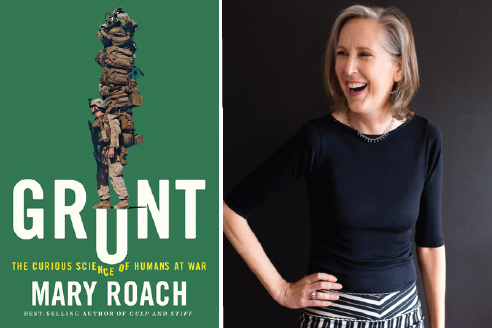
I enjoy well written books about science. Last month, I raved about Hope Jahren’s brilliant Lab Girl and now, in an embarrassment of riches, we have Mary Roach’s quirky, Grunt. Mary Roach pursues science in her own unique way. Panic, exhaustion, heat, and noise are the enemies of soldiers. Roach hangs out with Marines and snipers to learn their secrets. And we find out why shrimp are more dangerous to sailors than sharks. If you’re in the mood for a very different viewpoint on life in the military, Grunt will surprise and delight you. GRADE: A
TABLE OF CONTENTS:
BY WAY OF INTRODUCTION
1.Second Skin: What to wear to war
2.Boom Box: Automotive safety for people who drive on bombs
3.Fighting by Ear: The conundrum of military noise
4.Below the Belt: The cruelest shot of all
5.It Might Get Weird: A salute to genital transplants
6.Carnage Under Fire: How do combat medics cope?
7.Sweating Bullets: The war on heat
8.Leaky SEALs: Diarrhea as a threat to national security
9.The Maggot Paradox: Flies on the battlefield, for better and worse
10.What Doesn’t Kill You Will Make You Reek: A brief history of stink bombs
11.Old Chum: How to make and test a shark repellent
12.That Sinking Feeling: When things go wrong under the sea
13.Up and Under: A submarine tries to sleep
14.Feedback from the Fallen: How the dead help the living stay that way
ACKNOWLEDGEMENTS
BIBLIOGRAPHY
THE JASON BOURNE TRILOGY [Blu-ray]
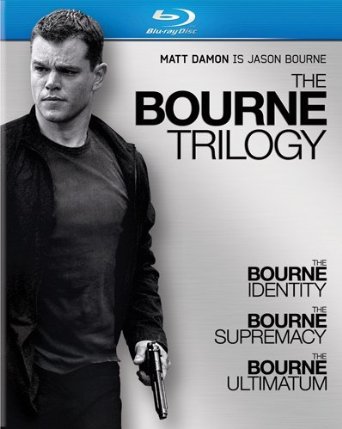
I pre-purchased my ticket to Jason Bourne which opens on Friday. This is the fourth movie based very loosely on the Robert Ludlum suspense novels. I’m watching the Blu-ray box set to prepare for the new installment in this spy series. Matt Damon plays Jason Bourne, a CIA agent with memory loss. Doug Liman directed The Bourne Identity (2002), The Bourne Identity is my least favorite movie in the series because Damon muddles around much of the time and then springs into sporadic action. Paul Greengrass directed The Bourne Supremacy (2004), The Bourne Ultimatum (2007) and now the new Jason Bourne (2016). Tony Gilroy co-wrote each film except for Jason Bourne. I’m a big fan of Paul Greengrass’s work. I first noticed Greengrass with his skilled direction of United 93 (2006) (he won the BAFTA Award for Best Director as a result and also received an Academy Award for Best Director nomination). I also liked Greengrass’s work on Green Zone (2010) and Captain Phillips (2013). Both The Bourne Supremacy and The Bourne Ultimatum are fast-paced thrillers that I really enjoyed. Damon and Greengrass were reluctant to make another Jason Bourne movie, but they were convinced that the character had more story to explore. Have you seen the Jason Bourne movies? Do you have a favorite? GRADE: The Bourne Identity: B; The Bourne Supremacy: A-; The Bourne Ultimatum: A.
HOW TO WRITE LIKE TOLSTOY: A JOURNEY INTO THE MINDS OF OUR GREATEST WRITERS By Richard Cohen
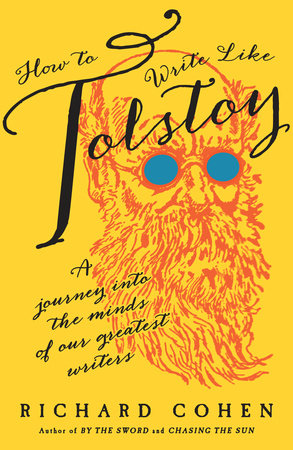
I love books like Richard Cohen’s How to Write Like Tollstoy because of all the great quotes and literary stories Cohen shares. As an editor, Richard Cohen worked on books with Kingsley Amis, Anthony Burgess, Sebastian, Faulks, Jean Auel, Fay Weldon, John Le Carre, A. Alvarez, Victoria Glendinning, Richard Holmes, V. S. Pritchett, Hilary Spurling, Madeleine Albright, Simon Winchester, Vanessa Redgrave, Dian Fossey, studs Terkel, John Keegan, and Jonathan Spence just to name a few. Cohen also taught writing courses at the university level (although he debates whether creative writing can taught). And, on top of all that, Richard Cohen has read widely and well. Every page of How to Write Like Tolstoy features quotes and comments on books of all sorts. Nabokov, Jane Austen, and Stephen King can show up on the same page.
“I feel sorry for novelists when they have to mention women’s eyes: there’s so little choice. … Her eyes are blue: innocence and honesty. Her eyes are black: passion and depth. Her eyes are green: wildness and jealousy. Her eyes are brown: reliability and common sense. Her eyes are violent: the novel is by Raymond Chandler.” Julian Barnes wrote that witty passage. You’ll have dozens of equally cool insights in How to Write Like Tolstoy. Highly recommended! GRADE: A
TABLE OF CONTENTS:
Preface
1. Grab, Invite, Beguile: Beginnings 3
2. Circular Ruins: Creating Character 25
3. Stolen Words: Three Forms of Plagiarism 55
4. The Trick of It: Points of View 77
5. Says You: The Art and Craft of Dialogue 103
6. Secret Trapdoors: The Power of Irony 125
7. Grabbing Fiction by the Tale 143
8. Waves in the Mind: Rhythm in Prose Writing 159
9. “Just Like Zorro”: Writing about Sex 183
10. Vision and Revision Part 1 209
11. Vision and Revision Part 2 227
12. The Sense of an Ending 241
Acknowledgments 257
Notes 263
Index 295
Photo Credits and Permissions 321
Just Like Zorro Writing About Sex
183
QUENCH YOUR OWN THIRST: BUSINESS LESSONS LEARNED OVER A BEER OR TWO By Jim Koch
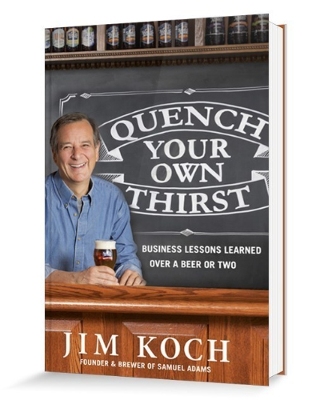
Jim Koch was a successful consultant, but he wasn’t happy. He wanted to start his own business. Koch’s father and grandfather were brew-masters. So Koch quit his job and decided to start a brewery back in the early 1980s. Everyone told Koch he was crazy and would fail. Koch ignored all this negative advice and built a craft beer called Sam Adams. And now, decades later, Koch owns a billion dollar company. I found Jim Koch’s story moving and inspiring. The details of Koch building his business and dealing with problems hold lessons for those who want to start their own businesses. I’m going to use Quench Your Own Thirst in my ENTREPRENEURSHIP class this Fall Semester. GRADE: A
TABLE OF CONTENTS:
Introduction
PART I: Mashing
1. Blow It Up
2. Turn Your Receiver On
3. Open Yourself to “Holy Shit”
4. Make It Better or Cheaper
5. Do the Math
6. Avoid “Smart” Investors
7. Look Hard for Talent. Then Look Again
8. The Best Marketing Plan Ever
9. Find Your Yoda
10. Sacred Cod Boston Lager?
11. The Difference Between Sex and Masturbation
PART II: Boiling And Cooling
12. String Theory
13. “I Make My Money When I Buy the Goods”
14. The Strength of the Weak
15. The Golden Rule of Selling
16. My Best Sales Call of All Time
17. You Can’t Hear with Someone Else’s Ears
18. You Don’t Climb a Mountain to Get to the Middle
19. Give Them Something to Talk About
20. When You’re Right, Push It
21. Take the Giant Turds in Stride
PART III: Fermenting
22. Grow Skinny
23. If You’re Not the Lead Dog, the Scenery Never Changes
24. Launch Your Long Shots
25. There’s No Pretending About Quality
26. The Most Expensive Education You’ll Ever Get
27. We Take Beer Seriously, but Not Ourselves
28. The CEO Flies Coach
29. The “Fuck You” Rule
30. Always Raise the Average
31. Make Your Public Offering Public
32. Learn to Take a Punch
PART IV: Maturation
33. Grow When You’re Not Growing
34. Endure the Endings
35. Mind Your Protection
36. If the Sun Is Shining, Look Out for an Avalanche
37. The Recall: Our Best Crisis Ever
38. Let Helga Do the Talking
PART V: Packaging
39. Practice Fingerspitzengefu¨hl
40. Stop Painting and Start Partnering
41. Welcome the Dude with the Gold-Painted Toenails
42. Quench Your Own Thirst
Acknowledgments
Jim’s Bookshelf
Notes
Index
STAR TREK: BEYOND
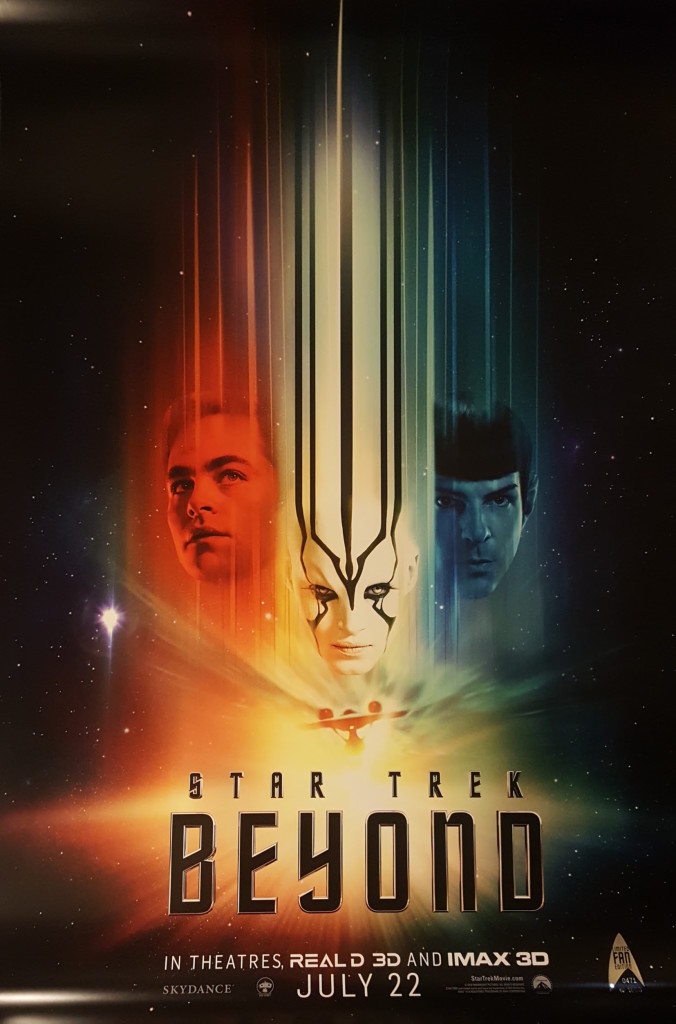
Star Trek: Beyond takes a while to get started. Part of the problem might be the script by Simon Pegg (who also plays “Scottie”) and Doug Jung. Justin Lin’s direction is adequte. Cinematographer, Steph F. Windon (veteran of the Fast & Furious films), delivers an action-filled big screen. The strength of the movie rests on Chris Pine as James T. Kirk, Karl Urban as Doctor McCoy, Zachary Quinto’s Spock, John Cho as Sulu, and the recently deceased Anton Yelchin as Pavel Chekov. And, once again, the talented Zoe Saldana is underutilized as Lieutenant Uhura. I found the fighting scenes tedious and the MacGuffin silly. But, other than that, watching Star Trek: Beyond is a good way to stay cool and eat popcorn. GRADE: B-
FORGOTTEN BOOKS #381: THE BIG BOOK OF SCIENCE FICTION Edited by Ann and Jeff VanderMeer
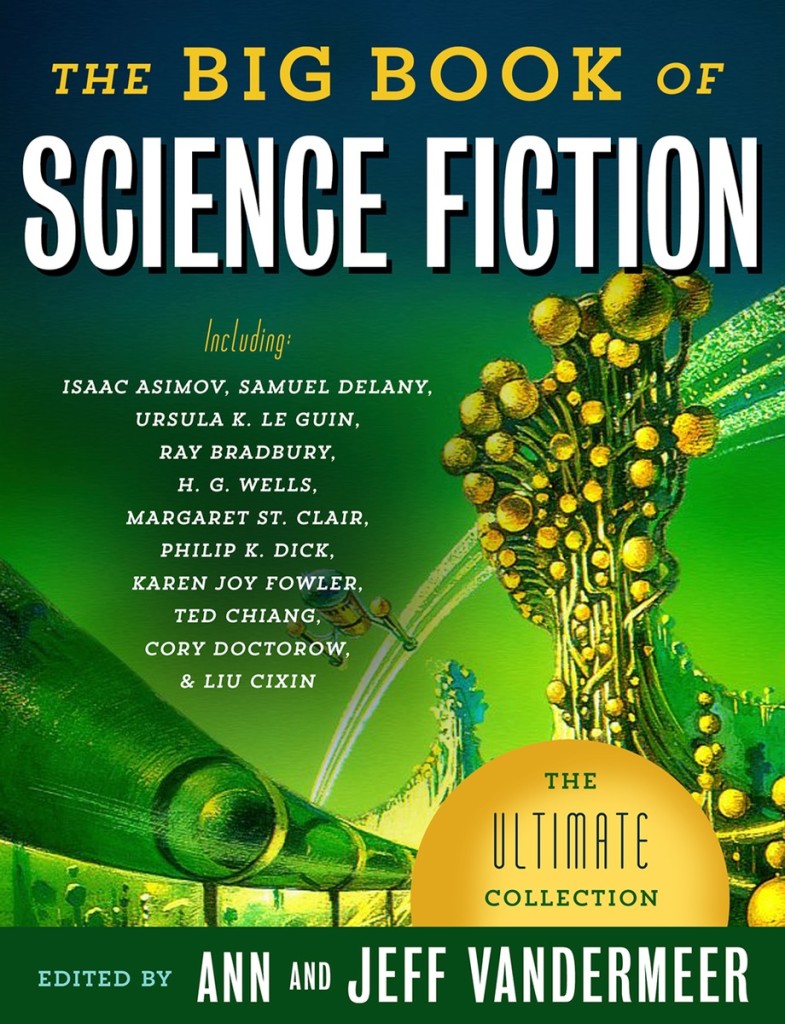
The Big Book of Science Fiction edited by Ann & Jeff VanderMeer weighs in at 1,178 pages. Yes, this is a Big Fat Book. Like the 1950 Groff Conklin anthology similarly titled The Big Book of Science Fiction, this 2016 version attempts to embrace the whole spectrum of SF with 99 stories. Despite the large number of stories, many readers will wonder why some of their favorite SF stories are missing. Like Ann & Jeff VanderMeer’s previous massive anthologies like The Weird and The Time-Traveler’s Almanac, you get a huge tome of stories to work your way through. The Vanderveers include more “international” SF stories than you’ll find in most SF anthologies. The list price of this volume is $25, but I was able to buy it on AMAZON for $15.94. A bargain! If you’re looking for a hefty anthology that maps out Science Fiction of the 20th Century, this book delivers. How many of these stories have you read? GRADE: A-
TABLE OF CONTENTS:
INTRODUCTION, Ann & Jeff Vanderveer
Yoshio Aramaki, “Soft Clocks” 1968 (Japan) – translated by Kazuko Behrens and stylized by Lewis Shiner
Juan José Arreola, “Baby H.P.” 1952 (Mexico) – new translation by Larry Nolen
Isaac Asimov, “The Last Question” 1956
J.G. Ballard, “The Voices of Time” 1960
Iain M. Banks, “A Gift from the Culture” 1987
Jacques Barbéri, “Mondo Cane” 1983 (France) – first translation by Brian Evenson
John Baxter, “The Hands” 1965
Barrington J. Bayley, “Sporting with the Chid” 1979
Greg Bear, “Blood Music” 1983
Dmitri Bilenkin, “Crossing of the Paths” 1984 – new translation by James Womack
Jon Bing, “The Owl of Bear Island” 1986 (Norway) – translation
Adolfo Bioy Casares, “The Squid Chooses Its Own Ink” 1962 (Argentina) – new translation by Marian Womack
Michael Bishop, “The House of Compassionate Sharers” 1977
James Blish, “Surface Tension” 1952
Michael Blumlein, “The Brains of Rats” 1990
Jorge Luis Borges, “Tlön, Uqbar, Orbis Tertius” 1940 (Argentina) – translation by Andrew Hurley
Ray Bradbury, “September 2005: The Martian” 1949
David R. Bunch, “Three From Moderan” 1959, 1970
Octavia Butler, “Bloodchild” 1984
Pat Cadigan, “Variations on a Man” 1984
André Carneiro, “Darkness” 1965 (Brazil) – translation by Leo L. Barrow
Stepan Chapman, “How Alex Became a Machine” 1996
C.J. Cherryh, “Pots” 1985
Ted Chiang, “The Story of Your Life” 1998
Arthur C. Clarke, “The Star” 1955
John Crowley, “Snow” 1985
Samuel R. Delany, “Aye, and Gomorrah” 1967
Philip K. Dick, “Beyond Lies the Wub” 1952
Cory Doctorow, “Craphound” 1998
W.E.B. Du Bois, “The Comet” 1920
Jean-Claude Dunyach, “Paranamanco” 1987 (France) – translation by Sheryl Curtis
S. N. Dyer, “Passing as a Flower in the City of the Dead” 1984
Harlan Ellison, “‘Repent Harlequin!’ Said the Ticktock Man” 1965
Carol Emshwiller, “Pelt” 1958
Paul Ernst, “The Microscopic Giants” 1936
Karen Joy Fowler, “The Lake Was Full of Artificial Things” 1985
Sever Gansovsky, “Day of Wrath” 1964 (Ukraine) – new translation by James Womack
William Gibson, “New Rose Hotel” 1984
Angélica Gorodischer, “The Unmistakable Smell of Wood Violets” 1973 (Argentina) – first translation by Marian Womack
Edmond Hamilton, “The Star Stealers” 1929
Han Song, “Two Small Birds” 1988 (China) – first translation by John Chu
Alfred Jarry, “The Elements of Pataphysics” 1911 (re-translation by Gio Clairval; France)
Gwyneth Jones, “The Universe of Things” 1993
Langdon Jones, “The Hall of Machines” 1968
Kaijo Shinji, “Reiko’s Universe Box” 1981 (Japan) – translation by Toyoda
Takashi and Gene van Troyer
Gérard Klein, “The Monster” 1958 (France) – translation by Damon Knight
Damon Knight, “Stranger Station” 1956
Leena Krohn, “The Gorgonoids” 1992 (Finland) – translation by Hildi Hawkins
R.A. Lafferty, “Nine Hundred Grandmothers” 1966
Kojo Laing, “Vacancy for the Post of Jesus Christ” 1992 (Ghana)
Geoffrey A. Landis, “Vacuum States” 1988
Tanith Lee, “Crying in the Rain” 1987
Ursula K. Le Guin, “Vaster Than Empires and More Slow” 1971
Stanisław Lem, “Let Us Save the Universe” 1981 (Poland) – translation by Joel Stern and Maria Swiecicka-Ziemianek
Cixin Liu, “The Poetry Cloud” 1997 (China) – translation by Chi-yin Ip and Cheuk Wong
Katherine MacLean, “The Snowball Effect” 1952
Geoffrey Maloney, “Remnants of the Virago Crypto-System” 1995
George R.R. Martin, “Sandkings” 1979
Michael Moorcock, “The Frozen Cardinal” 1987
Pat Murphy, “Rachel in Love” 1987
Misha Nogha, “Death is Static Death is Movement” 1990
Silvina Ocampo, “The Waves” 1959 (Argentina) – first translation by Marian Womack
Chad Oliver, “Let Me Live in a House” 1954
Manjula Padmanabhan, “Sharing Air” 1984 (India)
Frederick Pohl, “Day Million” 1966
Rachel Pollack, “Burning Sky” 1989
Robert Reed, “The Remoras” 1994
Kim Stanley Robinson, “Before I Wake”1989
Joanna Russ, “When It Changed” 1972
Josephine Saxton, “The Snake Who Had Read Chomsky” 1981
Paul Scheerbart, “The New Abyss” 1911 (Germany) – first translation by Daniel Ableev and Sarah Kaseem
James H. Schmitz, “Grandpa” 1955
Vadim Shefner, “A Modest Genius” 1965 (Russia) –translation by Matthew J. O’Connell
Robert Silverberg, “Good News from the Vatican” 1971
Clifford D. Simak, “Desertion” 1944
Johanna Sinisalo, “Baby Doll” 2002 (Finland) – translation by David Hackston
Cordwainer Smith, “The Game of Rat and Dragon” 1955
Margaret St. Clair, “Prott” 1985
Bruce Sterling, “Swarm” 1982
Karl Hans Strobl, “The Triumph of Mechanics” 1907 (Germany) – first translation by Gio Clairval
Arkady & Boris Strugatsky, “The Visitors” 1958 (Russia) – new translation by James Womack
Theodore Sturgeon, “The Man Who Lost the Sea” 1959
William Tenn, “The Liberation of Earth” 1953
William Tenn, “Ghost Standard” 1994
James Tiptree, Jr., “And I Awoke and Found Me Here on the Cold Hill’s Side” 1972
Tatyana Tolstoya, “The Slynx” 2000 (Russia) – translation byJamey Gambrell
Yasutaka Tsutsui, “Standing Woman” 1974 (Japan) – translation by Dana Lewis
Lisa Tuttle, “Wives” 1979
Miguel de Unamuno, “Mechanopolis” 1913 (Spain) – new translation by Marian Womack
Élisabeth Vonarburg, “Readers of Lost Art” 1987 (Canada/Quebec) – translation by Howard Scott
Kurt Vonnegut, “2BRO2B” 1962
H.G. Wells, “The Star,” 1897
James White, “Sector General” 1957
Connie Willis, “Schwarzschild Radius” 1987
Gene Wolfe, “All the Hues of Hell” 1987
Alicia Yánez Cossío, “The IWM 1000” 1975 (Chile) – translation by Susana Castillo and Elsie Adams
Valentina Zhuravlyova, “The Astronaut” 1960 (Russia) – new translation by James Womack
Yefim Zozulya, “The Doom of Principal City” 1918 (Russian) – first translation by Vlad Zhenevsky
THE BLACK WIDOW By Daniel Silva

Daniel Silva’s latest spy novel, The Black Widow, updates John Le Carre’s classic, The Little Drummer Girl (1983). ISIS attacks in Paris and Brussels leads intelligence services to attempt to penetrate the terrorist network. Gabriel Allon, Daniel Silva’s master spy for 16 books (I’ve read most of them), recruits a doctor who can speak French and Arabic. Natalie agrees to the perilous mission and becomes transformed into a Palestinian woman cover who is a “Black Widow.” Black Widows are women whose husbands or boyfriends have been killed and want revenge. After Natalie is trained, she’s placed in a French clinic near a Muslim neighborhood. Within a short time, Natalie is approached by an ISIS recruiter. Her story is believed and soon Natalie is sent to the ISIS headquarters in Syria. Before long, Natalie finds herself caught up in the next terrorist attack. The Black Widow is 528 pages long (which qualifies it as a Big Fat Book) but the pages fly by as Silva ratchets up the suspense. If you’re looking for a Summer Spy Novel, I recommend The Black Widow. It’s intense! GRADE: B+
BLACK MAN, WHITE HOUSE: AN ORAL HISTORY OF THE OBAMA YEARS By D. L. Hughley
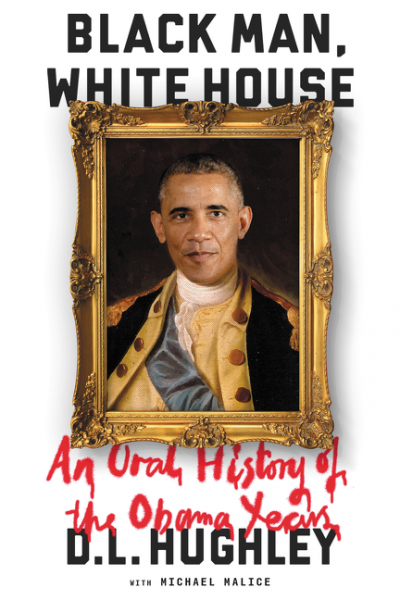
Comedian D. L. Hughley “translates” the Obama Years in the White House with wicked political commentary in Black Man, White House. Hughley uses the device of “quotes” from the major players in this political drama: the Clintons, the Bushes, Mitt Romney, Joe Biden, Sarah Palin, John McCain, and dozens of others. D. L. Hughley has had comedy specials on HBO and Showtime. Hughley’s first book was I Want You to Shut the F#ck Up. Chris Rock haled it as “the best book since The Hunger Games. Black Man, White House is just as good. GRADE: B+
TABLE OF CONTENTS:
Prologue: Democratic National Convention: July 27, 2004
1. Senator Obama, 2004–2006
2. Becoming the Nominee, 3007-2008
3. Winning the White House, 2008
4. The Inauguration, January 20, 2009
5. Senate Supermajority, 2009
6. Making Appointments, 2009
7. The Beer Summit, July 2009
8. Hear Cares, July-October 2009
9. Wins and losses, October 2009-January 2010
10. The Shellacking, February-November 2010
11. OBL & BS, November 2010-July 2011
12. Ready for Romney, July 2011-May 2012
13. Long Hot Summer, June-September 2012
14. Winner and Still Champion, September-December 2012
15. Second Chances, January-December 2013
16. Packing the Bags, 2014-2016
Index